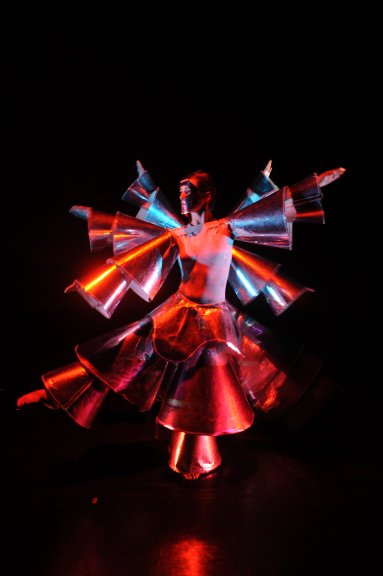30.09.21 — 15:45
CN D à Pantin
15:45 — 30 min.
Tsatsal: a ritual dance?
by Raphaël Blanchier (France)
In Mongolia, Tsatsal refers to an ordinary daily ritual performed by women, which consists in spraying droplets of milk with a carved spoon as a propitiatory offering. During the inaugural choreography performed during the national holiday Naadam in 2013, some of the female dancers integrated this ritual in the performance, which took place in the national arena in front of an audience of over a thousand spectators. Although the gesture was choreographed, its ritual dimension was not undermined because of this, and the change in context, the synchronicity of the dancers, or the geometry of the choreography it was integrated into didn’t lessen its rituality either. Actually, the ritual transcends the festive context it is performed in, as well as the status of the dancers in this festive event, and changes the relationship between the performers and the spectators, inviting us to consider its ambivalent dimension and to consider this Naadam dance as more than a mere entertaining performance. This particular example suggests that the ambiguous kinship between dance and rituals is what allows the dance to have a bigger affective impact on the audience in that type of context.
16:15 — 30 min.
“A ballet is a ritual”: On Jerome Robbins’ Creative Process
bye Hiie Saumaa (USA)
In a piece titled Thoughts on Choreography (1954), the cho- reographer Jerome Robbins wrote, “My starting point in composition is that of the modern choreographer – the feeling to be portrayed. I would not limit the kinds of feelings expressible by dance. A ballet is a ritual which makes a rite out of any subject matter. My aim is, through form, to give to each ballet idea its own life, its own fulfillment.” In this presentation, I will explore Robbins’ choreographic process and his approach to ballets as rituals. I will turn to aspects of his creativity that have not been widely discussed – his writings and visual art, housed in his archives in New York City. I will explore his diaries and home movies from the 1970s and discuss the ballet Watermill (1972), one of Robbins’ most experimental works characterized by slow movement, abstraction, and Nohtype moves. I will explore how ritualistic elements are present in the preparation for composing this ballet and in the ballet itself.
17:00 — 1h.
Nikolais and Liturgies: an abstract American ritual
par Marc Lawton and Alberto del Saz (France and USA)
Inspired by primitivism, which was particularly influential in the 1930’s and 1940’s in the USA, Nikolais created performances with a strong ritual component which took both audiences and dance critics by surprise. Relying on the technical innovations of his time and various artifacts (masks, make-up, props, strange sets, bright colors, elaborate lighting and music), he created a theatre of illusion. He also directed feature films and explored nudity, exploring his “fascination for rituals which seem to connect man to an unknown origin”. Totem (1960) is a particularly telling example, as well as its 1983 version, Liturgies: “Totem focused on elements which had fascinated me for years, namely mysticism, the occult, ceremony, fervor, fetish, tarot. I was inspired by all these elements.” This paper will be a dialogue between Alberto Del Saz and Marc Lawton, who will present Nikolais’ work to the audience through various video clips; they will attempt to show how ritual and abstraction are connected in these pieces.
18:00 — 1h.
From Nijinski to Monkman: Ritual Trouble
by Raphaël Preux and Enora Rivière (Canada)
In the virtual reality performance experiment Honour Dance (2008), Kent Monkman stages the ritual dances honoring two-spirit individuals from the Algonquian First Nations people, and negotiates their colonial representations by combining references to painter Georges Catlin (1837) and Stravinsky’s Rite of Spring (1913). Our respective research areas – heteronymous choreographic narratives in Sacre #2 by Dominique Brun (2014) from the point of view of the dancer (Rivière) and anthropological dance research on gender and ritual music (Preux) – have led us to combine our perspectives on Honour Dance, and to wonder what is at stake when recontextualizing rituals, in terms of decolonializing, political agency and power dynamics. We investigate how fiction operates within rituals, what two-spirit epistemologies can teach us, how performers experience rituals through their own personal experience.
